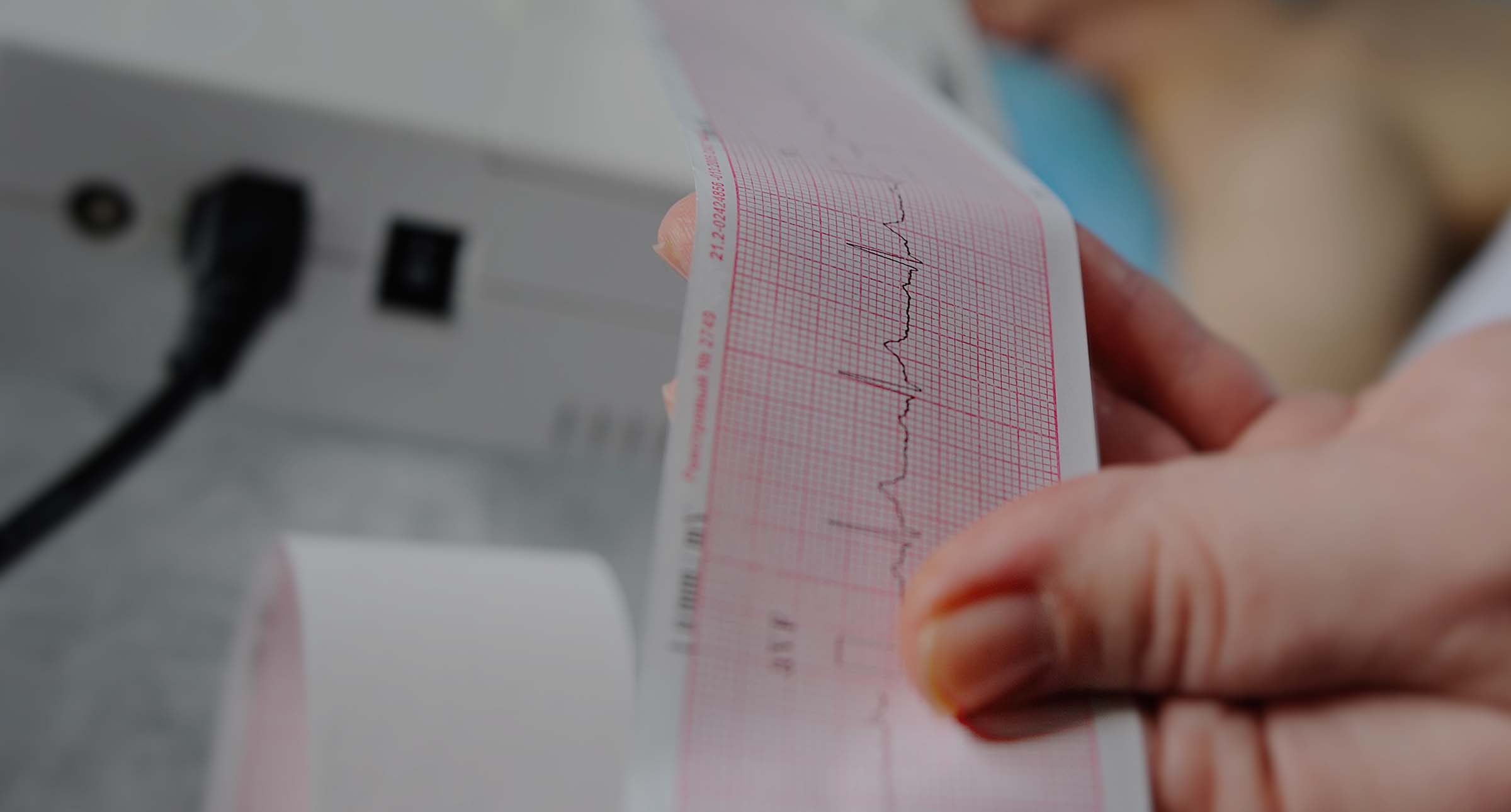Six congenital heart conditions parents might need to know about

Congenital heart lesions are surprisingly common. In this article, we take a “deep dive” through six conditions that are illustrative of the kind of issues that can occur, and give some indication of what sort of treatment is available.
In clinical negligence terms, paediatric heart defects became well known through the Bristol Heart Babies in the 1990s. Since then, heart surgery has blazed a trail in terms of patient safety, and has adopted some quite sophisticated risk stratification tools. However, incidents can and do still happen.
Click the links below to be taken to the heart condition you want to know more about:
1. Tetralogy of Fallot
Tetralogy of Fallot is a congenital cardiac condition. It is associated with various genetic disorders including 22q11 deletion syndrome, DiGeorge syndrome and Down’s syndrome.
What are the four defects found in tetralogy of Fallot?
Fallot’s tetralogy has four constituent parts:
- A (usually large) ventricular septal defect (VSD – a hole in the wall dividing the lower two chambers of the heart). More than one VSD may be present;
- A pulmonary artery (the artery which takes de-oxygenated blood to the lungs) which is narrowed at its base. The degree of narrowing varies from patient to patient;
- A large, overriding aorta (the body’s main artery which supplies oxygenated blood). In Fallot’s, the aorta straddles the two pumping chambers. The aorta therefore receives an admixture of oxygenated and de-oxygenated blood from the left and right chambers respectively, rather than solely oxygenated blood;
- A hypertrophic (highly muscled) right ventricle. This happens as a consequence of the other three defects, which create the fourth component over time. A hypertrophic pumping chamber is likely to make matters worse over time. This is because the muscle has to expand into the space which would otherwise be filled with de-oxygenated blood, and that in turn means that the muscles have to work even harder to compensate.
What is the most common symptom in an infant with tetralogy of Fallot?
Typically, children suffering from this condition will exhibit symptoms in the first year (quite possibly in the first month) of life. The cardinal sign is linked to low blood oxygen saturation levels and is in the form of cyanosis (literally, blueness) either from birth, or occurring over the first year of life. Cyanosis is normally noticeable around the lips and on the fingers.
Other symptoms include:
- A heart murmur may be present. If present, it can be quite pronounced.
- There can be problems with feeding (babies with the condition can go blue during or after a feed). This can in turn lead to problems with weight gain, and associated difficulties with physical development.
- There can be problems with breathing on exertion. Grunting may be present (this can also be marked after feeds).
- There can be acute spells of hypoxia (lack of oxygen) which result in dizziness, shortness of breath, and loss of consciousness.
How is tetralogy of Fallot usually diagnosed?
Diagnosis is usually made by performing an echocardiogram – a form of ultrasound. Ultrasound devices are very good at detecting anomalies in blood flow, and may assist in detecting structural issues (including holes) affecting the heart’s chambers. They can also allow a reasonably precise assessment of interruptions of blood flow caused by impedances such as pulmonary stenosis (narrowing of the pulmonary artery).
It may be necessary to clarify the diagnosis by further investigation – possibly including a cardiac catheterisation. During this procedure, a camera is threaded up blood vessels towards the heart and imaging of the affected areas is then performed.
Can tetralogy of Fallot go undiagnosed?
Not really, no. There’s no way this condition wouldn’t kick off pretty major symptoms early in life.
What is the first line treatment for tetralogy of Fallot?
Once the diagnosis has been made and clarified, treatment is surgical. A primary repair (i.e. corrective surgery) may be attempted following diagnosis. Alternatively, a separate procedure (usually a Blalock-Taussig shunt – form of surgical communication between the systemic blood supply and the deoxygenated blood which is sent to the lungs) may be performed, with the aim of facilitating growth and with surgical correction to be performed at a later date.
The longer a repair is left, the more likely it is that hypertrophy (thickening of the muscle) in the right ventricle will be pronounced.
Corrective surgery will aim to achieve:
- closing of VSD(s), usually with a patch;
- narrowing at the base of the pulmonary artery will be surgically corrected;
- relocation of the aorta so that it is connected solely to the left ventricle.
Corrective surgery will normally be conducted on cardiopulmonary bypass (i.e., the body will be supplied with oxygenated blood from a machine), including a period during which the heart will be stopped. During this section of the procedure, the aorta is clamped and a preservative solution known as cardioplegia is periodically washed around the heart, with the aim of preserving cardiac tissue. The surgeon will aim to perform the repair swiftly and thoroughly, in order to minimise problems associated with prolonged time spent on bypass and aortic cross-clamps. These include an increased risk of mortality and brain damage.
Is tetralogy of Fallot surgery risky?
Corrective surgery for this condition is, like any open heart surgery, not without risk. Mortality rates associated with surgery have come down a lot and are now something like 2 – 5%, with very encouraging long-term survival figures.
Can tetralogy of Fallot be cured without surgery?
No. If you have it, you’ll need corrective surgery.
2. Septal defects, including Atrioventricular Septal Defect (AVSD)
Septal defects are holes in the wall (septum) that divides the left and right sides of the heart, with different categories for different parts of the heart.
These can be defined as:
- Holes in the wall dividing the heart’s upper two collecting chambers (the atria) are called atrial septal defects (ASD).
- Similarly, holes in the wall dividing the heart’s lower two pumping chambers (the ventricles) are called ventricular septal defects (VSDs).
What is the most common septal defect?
VSDs and ASDs are two of the most common form of congenital cardiac lesions, and one or more holes may be present in any given patient; the presence of an ASD does not exclude the possibility of a VSD (or vice versa). Where multiple VSDs are present, the condition is called “Swiss cheese VSD”, for obvious reasons.
The left side of the heart receives oxygenated blood from the lungs, which is then pumped around the body through the aorta. The right side of the heart receives de-oxygenated blood from the veins and this is then pumped into the lungs, via the pulmonary artery. Thus, the right and left sides of the heart deal with de-oxygenated and oxygenated blood respectively, and this arrangement ensures a complete division between de-oxygenated and oxygenated blood.
What is Atrioventricular Septal Defect (AVSD)?
Atrioventricular septal defect (AVSD) is a relatively uncommon congenital cardiac condition. There appears to be an association between the condition and Down’s syndrome (although the presence of one does not indicate with certainty that the other is also there).
An AVSD is a large hole in the wall dividing the right and left sides of the heart. It is located centrally, and therefore both the collecting chambers (the atria) and the pumping chambers (the ventricles) are involved: the hole lies between all four.
It is possible to have a partial AVSD (a defect involving the atria but with no hole at ventricular level): this is a less severe variant of this lesion; it will not be discussed in detail here.
In a normal heart, the left atrium (collecting chamber) receives oxygenated blood from the lungs, which is then pumped by the left ventricle around the body. The right atrium receives de-oxygenated blood from the veins, which is then pumped into the lungs by the right ventricle. Thus, the right and left sides of the heart deal with de-oxygenated and oxygenated blood respectively: the arrangement ensures a complete division between de-oxygenated and oxygenated blood. If there is a large hole between all four chambers, then that division necessarily breaks down. Both the right and left sides of the heart will receive a mixture of oxygenated and de-oxygenated blood. Thus, blood that is already partially oxygenated will be pumped back into the lungs, and the systemic circulation will receive blood that is not adequately oxygenated.
‘Shunt’ issues
There is a further problem arising from the arrangement in AVSD, which arises from the disparity in pressures between the right and left sides of the heart. Because there is a hole, there will be a “shunt” – i.e., the side of the heart which is pumping at a higher pressure will push blood across the hole and into the other side of the heart.
The shunt will initially probably be from left to right, because the left side of the heart operates at a higher pressure its pumping chamber pushes out blood at a higher volume: hence, blood will be forced from the left to the right side of the heart. This is a dynamic process, and over time the direction of the shunt may reverse (e.g. right – left, rather than left – right).
Typically, this means that the pulmonary arteries receive more blood than they can cope with, and over time this increases pulmonary vascular resistance. If this is left uncorrected, it will lead to permanent damaging changes to the lung fields. Conversely, the left side of the heart will not be able to pump a sufficient supply of blood around the body as each time it pumps, it is losing some of its volume to the lungs. Thus, the body receives a blood supply that is inadequately oxygenated and quantitatively insufficient.
How serious is a hole in the heart?
If one or more holes in the walls between the chambers are present, then some degree of “mixing” of oxygenated and de-oxygenated blood will occur. This carries the corollary that blood that is already partially oxygenated will be pumped back into the lungs, and the systemic circulation will receive blood that is not adequately oxygenated. The problems this causes are in proportion to the size and location of the hole(s) in the septal wall.
With any septal defect, there will be a “shunt” – i.e., the side of the heart which is pumping at a higher pressure will force blood through the hole and into the other side. Unless there are other lesions present, the shunt will initially probably be from left to right, because the left side of the heart operates at a higher pressure. This is a dynamic process, and over time the direction of the shunt may well reverse (e.g. right – left, rather than left – right).
What are the symptoms of a heart hole?
As above, smaller VSDs and ASDs may not cause symptoms and, if detected, it may suffice simply to monitor the child periodically. Smaller holes can close on their own over time.
With a larger hole (particularly a VSD), a child may breathe harder and faster than usual. That is because blood is being forced across from the left ventricle into the right side of the heart and thereafter into the lungs. Consequently, the lungs are becoming congested by the extra blood flow. If this is not corrected then permanent damage to the lungs may occur.
If there is an aperture between the right and left sides of the heart, it is possible for clots to cross over from the venous circulation and end up in the arterial circulation. From there, they will typically lodge in either the cerebral or possibly the coronary vessels. There is a particular association between (usually undiagnosed) patent foramen ovale and strokes.
How is a septal defect detected?
In the case of children suffering from larger VSDs, a heart murmur is often audible on stethoscope.
Assuming the hole is significant enough to be causing symptoms (whether through its size or because it is disturbing the action of the heart valves), the child’s progress is likely to be monitored in the first instance.
Can atrial septal defect go undiagnosed?
Everyone is born with a form of ASD which usually closes early in life. However, some people’s don’t, and this can remain completely clinically silent throughout the entirety of life. The rule of thumb is that if it’s producing symptoms, it needs an operation.
How is AVSD diagnosed?
Children suffering from this condition will characteristically exhibit marked symptoms very early in life. Typically, you will find the following complications:
- Cyanosis (a blue tinge to the skin, usually most pronounced around the fingertips and lips), and dyspnoea (problems with breathing).
- Heart failure may be present at or shortly after birth. If present, then a greyish appearance to the skin accompanied by sweating, and/or signs of respiratory distress (wheezing or grunting) and/or fatigue may all be present. The child’s heart may be irregular.
- When measured, oxygen saturation levels are likely to be significantly lower than usual.
- There are likely to be problems with feeding.
What is the life expectancy of AVSD?
Longer term, if left untreated, AVSD will cause death – usually as a consequence of cardiac failure – in the sufferer’s late twenties or early thirties. Historically, clinicians were reluctant to operate upon patients with Down’s syndrome and AVSD. This was because the lifespan of patients with Down’s was then in the range late twenties – early thirties in any event, and consequently it was thought unethical to put this group through a procedure which then carried a 25% mortality risk for no real benefit. The position is now very different, and survival rates are far higher.
How do you fix a septal defect?
If symptoms progress and/or the child’s condition deteriorates, then surgical intervention will be required.
In the first instance, pulmonary artery banding may be offered. As the name suggests, in this procedure a band is placed around the main pulmonary artery. This procedure is designed to limit the volume of blood flowing into the lungs. This is not a permanent solution: the aim is to “hold” the patient until definitive corrective surgery can be offered.
Surgery takes the form of a procedure which involves suturing (stitching a patch over the hole). The patch can be made either from fabric or pericardium. Over time, the heart’s tissue will grow and close over the patch, and the wall will self-seal.
The surgical procedures involved
Historically, patch closure of septal defects could only be offered as an open heart procedure, which is necessarily very invasive. It is now possible to offer patch closure of some defects as a closed procedure in some cases.
The closed procedure involves the insertion of a device on the end of a wire in a cardiac catheterisation lab. The device is inserted into the blood vessels and threaded through until it is in position. Thereafter, it is placed over the defect and sealed into place. The advantage of this technique is that it is minimally invasive.
If open heart surgery is required, it is conducted on cardiopulmonary bypass. As with any cardiac procedure which involves time spent on cardiopulmonary bypass and either the use of aortic cross-clamps or possibly total circulatory arrest, time is of the essence. There is a limited amount of time within which to effect the repair, as the likelihood of damage to the heart and other organs in the body mounts with the passage of time.
If surgery is successful, then the longer-term outlook is generally very good, with normal life expectancy and probably normal or near-normal exercise tolerance.
3. Coarctation of the aorta
Coarctation of the aorta is an extracardiac (literally, outside of the heart) condition which is congenital, and which affects the body’s main systemic artery – the aorta – usually around the level of the aortic arch.
Coarctation simply means “narrowing”, so a coarctation of the aorta is a narrowing of the aorta. As above, that narrowing usually occurs around the level of the aortic arch, and often in the vicinity of the ductus arteriosus (a communication between the pulmonary and systemic arterial circulation that is always present before birth, and usually closes shortly after birth).
The length of tissue affected and the degree of narrowing present will vary from patient to patient, and the coarctation of the aorta may present with one or more other structural anomalies. There is some observed association between this lesion and other lesions affecting the left side of the heart.
What are the signs and symptoms of coarctation of the aorta in children?
The narrowing in the aorta imposes a significant degree of extra stress on the left ventricle (the chamber in the heart that pumps oxygenated blood around the body). This is because the left ventricle has to pump harder to get oxygenated blood past the narrowed area and towards the body below this point. There is also likely to be an observable pressure differential in bloodflow before and after the coarctation (the differential is in direct proportion to the degree of the narrowing).
Children with a severe degree of this condition typically exhibit symptoms of high blood pressure in their upper body, and low pressure in their lower body: for this reason, one way to test for this condition is to measure blood pressure above and below the level of the aortic arch: a significant differential between the two measurements would strongly imply the presence of an anomaly (probably a narrowing) at the aortic arch.
A large proportion of children who suffer from this condition will be diagnosed within the first year of life: they will have a more severe degree of narrowing and the type and severity of symptoms manifested will reflect that (hence it is picked up more quickly). However, diagnosis can occur very late – it is not unheard of for this to occur during the patient’s teens.
Parents may find that:
- if the narrowing is mild, then symptoms may be barely noticeable or actually absent.
- if present, symptoms characteristically include breathing difficulties, problems with feeding and failure to thrive.
- if the condition goes undetected, then symptoms including dizziness, fainting and shortness of breath may arise. These are associated with the extra strain the condition imposes upon the heart.
- the likelihood of higher blood pressure in the upper body can lead to fatigue, headaches and nosebleeds. The corresponding likelihood of lower blood pressure in the lower limbs can lead to sensations of coldness in the patient’s feet and/or legs, and/or pain upon exercise.
How is coarctation diagnosed?
If the child’s symptoms are severe, it is probable that echocardiography (a form of ultrasound) would be sufficient to make a diagnosis. Echocardiography is very good at detecting anomalies of flow, and it is correspondingly likely that a narrowing which significantly impeded the flow of blood would be visible on echocardiography.
In older children and teenagers, other diagnostic imaging might be required to confirm the diagnosis (possibly MRI or angiography).
How do you treat coarctation of the aorta?
Once the diagnosis has been made and clarified, it might be appropriate to do nothing if the symptoms are either mild or non-existent. Surgical treatment is likely to be indicated if the symptoms are more severe.
Surgery typically involves the dissection and excision of the narrowed portion of the aorta, and either joining (anastomosing) the two ends of the aorta, or alternatively placing a surgical stent (a length of tubing) in position.
A less invasive alternative would be to perform angioplasty. This involves the insertion of a device into the arterial circulation. It is guided to the site of the narrowing and once in position, a balloon is inflated, thus widening the artery. There is some evidence of coarctation recurrence after balloon dilatation. It is therefore not unknown for more than one corrective procedure to be required.
In order to place a stent, the two ends of the aorta on either side of the narrowed section must be clamped. The narrowed section is then cut out, and the stent is stiched into place. There is a limited amount of time within which to complete the surgical manoeuvres relating to this. The risks of this surgery are related primarily to the manoeuvres and the clamping of the aorta.
Whenever an operation on the aortic arch occurs, there is also a risk of stroke. This is because an interruption of blood supply to the brain is likely to occur. It is possible to mitigate this risk and, unsurprisingly, the research literature suggests that meticulous pre-operative planning is highly advisable.
If the lower body is deprived of oxygenated blood for a sufficiently lengthy period of time, then a range of issues can ensue: In one case we are aware of, the surgical stent was fitted and blood was let back into the aorta. At this point, the stent shot off the repair site on the arc of a jet of blood, and the surgical team lost it. The aorta was re-clamped and there was a desperate hunt around the operating theatre for the stent. It was eventually retrieved and reinserted. The patient was left paraplegic.
4. Total Anomalous Pulmonary Venous Drainage/Return (TAPVD/TAPVR)
Four pulmonary veins should connect the lungs to the left atrium (the collecting chamber on the left side of the heart). The pulmonary veins allow oxygenated blood to flow into the left side of the heart, from where it is distributed around the body.
What is anomalous venous drainage?
In total anomalous pulmonary venous drainage (TAPVD) (also known by venous return, or ‘TAPVR’), the pulmonary veins do not join the lungs to the left atrium. Instead, they follow one or (more likely) several anomalous pathways, and connect to the circulation supplying the right side of the heart. This means that instead of the left side of the heart receiving a supply of oxygenated blood, the right side of the heart has to process this in addition to its normal supply of de-oxygenated blood.
In TAPVD, at least one hole in the septal wall (the wall dividing the right and left sides of the heart) will be present. Normally the hole will be between the atria (the collecting chambers), although that is not necessarily the case. The hole(s) is helpful in that it allows a mixture of oxygenated and de-oxygenated blood to enter the left side of the heart, which would otherwise receive no supply at all. The hole(s) also reduces the pressure of blood flowing into the lungs, which will in effect be receiving close to a double load of blood to process.
Whilst some blood passes into the left side of the heart, in the setting of TAPVD, the body receives a blood supply that is inadequately oxygenated and quantitatively insufficient.
What are the symptoms of TAPVR?
Children with TAPVR will become symptomatic at or very shortly (within the first week of life) after birth. Symptoms typically include:
- breathlessness
- cyanosis (blueness),usually most pronounced around the lips and fingertips
- if the abnormal veins are blocked, then the child will likely collapse.
- can be a greyish appearance to the skin and/or sweating and/or wheezing or grunting.
- When measured, oxygen saturation levels are likely to be significantly lower than usual. However, venous oxygen levels can be far higher than normal.
- There are also likely to be problems with feeding.
In unobstructed TAPVD, a more insidious decline might be expected, with the child suffering repeated chest infections and failure to thrive. If the venous supply is obstructed then it is likely that the child will be acutely unwell more or less from birth, manifesting shortness of breath, rapid heart rate and cyanosis. The majority of diagnoses are made in the first of life.
How is anomalous pulmonary venous return diagnosed?
As above, diagnosis is usually made soon after birth, and is confirmed by diagnostic imaging. Echocardiography (a form of ultrasound) will usually confirm the diagnosis. It is extremely helpful in the context of TAPVD, as the problem is associated with blood flow and liquid flow shows up quite clearly on ultrasound. The time of diagnosis will usually depend upon how quickly symptoms appear and what these are.
It may be necessary to clarify the structures further by additional imaging studies, possibly including MRI.
What is the surgical management of TAPVR?
Once the diagnosis has been made and clarified, corrective surgical treatment will be required.
Surgery is conducted on cardiopulmonary bypass. A median sternotomy (a large cut down the centreline of the chest and through the breastbone) is made. The ribs are spread. The pulmonary veins are reconnected to the left atrium, and the sites at which they joined the supply to the right heart (the inferior and/or superior vena cavae) will be surgically closed. The atrial septal defect(s) and any ventricular septal defect(s) are closed.
As with any cardiac procedure which involves either time spent on cardiopulmonary bypass and either aortic cross-clamps or possibly total circulatory arrest, there is a limited amount of time within which to effect the repair, as the likelihood of damage to the heart and other organs in the body mounts with the passage of time.
What is the success rate of TAPVR surgery?
TAPVR surgery now has excellent success rates (in excess of 90%).
What is the life expectancy of someone with TAPVD?
TAPVD was historically associated with a relatively high mortality rate but improvements in care mean the situation is now much improved.
5. Transposition of the Great Arteries
Transposition of the Great Arteries (TGA) is a relatively uncommon (approximately 1:10,000 incidence) congenital cardiac condition.
In TGA, the great arteries join the wrong sides of the heart. As a result, the aorta (that supplies oxygenated blood to the body) joins to the right ventricle, which receives de-oxygenated blood from the veins. Meanwhile, the pulmonary artery (which supplies de-oxygenated blood to the lungs) joins the left side of the heart, which receives oxygenated blood from the lungs. In theory, that should mean that the lungs and the systemic circulation work on completely separate loops, with the lungs receiving a continuous supply of oxygenated blood, and the body receiving only de-oxygenated blood – the opposite of what should be happening.
In practice, at least one communication between these two circuits is always present. In practice, a “mix” of oxygenated and de-oxygenated blood occurs.
As with any congenital cardiac lesion, TGA may present with one or more other structural anomalies. Holes in the walls dividing the upper (collecting) and/or lower (pumping) chambers of the heart, known as septal defects, are relatively common in this context. Whilst holes in the heart are usually a problem, they may have a beneficial effect in the short term where TGA is present: that is because they also facilitate the mixing of oxygenated and de-oxygenated blood.
More unusually, TGA may be associated with near-“self-correction”. This is known as congenitally corrected transposition of the great arteries. In this condition, the vessels are plumbed into what should be the wrong ventricles, as described above (aorta into the right; pulmonary artery into the left). However, the collecting and pumping chambers have themselves been “rewired” in this variant. Thus, the morphologically right side of the heart receives oxygenated blood from the pulmonary veins, and pumps it into the aorta. Meanwhile, the morphologically left side of the heart receives de-oxygenated blood from the superior and inferior vena cavae and passes this to the pulmonary artery for re-oxygenation.
Whilst it sounds as though the heart has self-corrected, there is a major problem with this arrangement: the right ventricle is smaller and is not designed to do the work of the left, and over time, it will not be able to cope with this workload, with fatal consequences if left untreated.
What are the signs and symptoms of transposition of the great arteries?
Children suffering from this condition will characteristically exhibit marked symptoms very early in life – quite possibly within hours of birth, and probably within the first week of life (n.b., that is not necessarily the case in congenitally corrected TGA), such as:
- appearing collapsed, grey and listless. They may be grunting or manifesting other signs of respiratory distress. Their oxygen saturation levels will be significantly lower than normal.
- appearing to be blue, otherwise known as cyanosis. Cyanosis may be present either from birth, or over the first month of life. It is normally noticeable around the lips and on the fingers, although blueness over the entirety of the face is not uncommon in children with this condition.
- having problems with feeding.
When is transposition of the great arteries diagnosed?
TGA can be diagnosed prenatally on ultrasound. However, this is not always possible.
Assuming it is not made antenatally, diagnosis is usually made soon after birth by diagnostic imaging. There may be distinctive appearances on chest x-ray. Echocardiography (a form of ultrasound) will usually confirm the diagnosis.
It may be necessary to clarify the diagnosis by further investigation – possibly including a cardiac catheterisation. During this procedure, a camera is threaded up the blood vessels towards the heart and imaging of the affected areas is then performed.
Once the diagnosis has been made and clarified, surgical treatment is likely to be indicated as the next course of action.
What is the initial treatment for transposition of the great arteries patients?
Arterial switch operation – What is an arterial switch procedure?
The treatment of choice for TGA is the arterial switch operation, either at first instance or more rarely following the insertion of a shunt – form of surgically-created communication which enables a mix of oxygenated and deoxygenated blood to occur. In this procedure, the great vessels are mobilised, and then “replumbed” into the correct sides of the heart.
This is a technically challenging procedure as it requires the relocation not only of the great arteries themselves, but also of the coronary arteries (which supply the muscles of the heart with oxygenated blood) that are connected to the aorta. In infants, the coronary vessels are extremely delicate and are only millimetres thick: very gentle and subtle surgical manoeuvres are required to relocate them. By way of an example, the operation that ultimately led to the Bristol Royal Infirmary paediatric cardiac scandal was an arterial switch procedure. During the course of this, there was an issue with the right coronary artery: in the words of the surgeon with conduct, “It just broke”.
Any holes in the walls of the heart are repaired. If the ductus arteriosus is still open, it is ligated (cut).
What are the complications of an arterial switch operation?
As with any paediatric cardiac procedure which involves time spent on cardiopulmonary bypass and either aortic cross-clamps or possibly total circulatory arrest, time is of the essence. There is a limited amount of time within which to effect the repair, as the likelihood of damage to the heart and other organs in the body mounts with the passage of time.
The alternative treatment if arterial switch is not appropriate
There are certain circumstances in which it would not be possible to offer an arterial switch operation (usually because the patient’s anatomy precludes this). In this situation, it may be possible to offer what is known as an atrial switch procedure.
In this situation, it may be possible to offer what is known as an atrial switch procedure. In essence, this procedure delivers the inverse solution of an arterial switch procedure. In an atrial switch procedure, the vessels from which the right side of the heart receives de-oxygenated blood (the superior and inferior cavae) are reconnected to the left atrium (collecting chamber); similarly, the four pulmonary veins which supply oxygenated blood from the lungs back to the heart are connected to the right atrium.
This is a technically simpler procedure than the arterial switch operation because it does not involve relocating the coronary vessels. However, it does not offer an optimal long-term solution, because the right ventricle will have to take over the workload of the left. It is not designed to do this, and will struggle to cope over the longer term. Patients who have the atrial switch procedure are at higher risk of early death (usually arising from cardiac failure).
As with any open heart procedure, there are a number of risks in addition to death for patients. These include paralysis, epilepsy, cortical blindness and brain damage. These are mercifully rare, and the paediatric cardiac surgical research community has shifted its focus during the last twenty years from concerns over mortality (death) to management of non-lethal complications.
6. Truncus Arteriosus
In a normal heart, the aorta (the body’s main systemic artery) arises from the left side, from where it is fed oxygenated blood from the left ventricle (pumping chamber).
Similarly, the pulmonary artery, which supplies the lungs with de-oxygenated blood, arises from the right ventricle. In truncus arteriosus, the aorta and the pulmonary arteries are fused at their base into a single vessel. Thus, the heart contains one major artery rather than two.
Further up, the truncus feeds into the aortic arch and the pulmonary arteries.
A large VSD (hole in the wall dividing the left and right ventricles – see the above point on septal defects) is always present.
The truncus characteristically sits over the VSD. This is important because it means that both the pulmonary arteries and the aorta will receive a mixture of oxygenated and deoxygenated blood rather than operating on two separate circuits. Moreover, the lungs will receive too much blood to process, and the body will receive too little.
What is truncus arteriosus associated with?
Children with this condition will typically present with severe symptoms (cyanosis – or appearing blue – signs of heart failure and collapse are all common) very early in life.
This is because there are not two arteries arising from the heart, so the supply of blood cannot be separated out into oxygenated and deoxygenated components (with oxygenated blood supplying the body, and deoxygenated blood being taken to the lungs). In truncus arteriosus the systemic circulation is supplied with only partially oxygenated blood. Meanwhile, the pulmonary circulation also receives a mixture of deoxygenated and oxygenated blood.
Blood pressure will also be a problem. The single arterial trunk pushes too much blood towards the pulmonary arteries and not enough towards the systemic circulation. Consequently, the lungs become congested by the extra blood flow. If this is not corrected then permanent damage to the lungs may occur. Meanwhile, the systemic circulation is quantitatively and qualitatively inadequate.
How is truncus arteriosus diagnosed?
Diagnosis is usually by echocardiography (a form of ultrasound). It may be necessary to clarify this by other forms of diagnostic imaging (probably cardiac catheterisation). If truncus arteriosus is discovered, surgical treatment will always be necessary.
How do you fix truncus arteriosus?
In the first instance, pulmonary artery banding may be offered. As the name suggests, in this procedure a band is placed around the main pulmonary artery. The aim of this procedure is to limit the volume of blood flowing into the lungs. This is not a permanent solution: the aim is to “hold” the patient until definitive corrective surgery can be offered.
Definitive surgery takes the form of a procedure called the Rastelli. This is an open-heart procedure (i.e. it is conducted on cardiopulmonary bypass, and the heart will be stopped during the procedure so that work within it can be carried out).
What is a Rastelli repair for truncus arteriosus?
In the Rastelli, a prosthetic main pulmonary artery is inserted, and stitched into position. The truncus is then used as the aorta, and is relocated so that it. The associated VSD is closed and if necessary the atrioventricular valve is repaired too.
The Rastelli is not a perfect procedure. The main reason for this is as follows: the prosthetic pulmonary artery cannot grow with the body, and repair is always necessary very early in life. Accordingly, it is probable that a child who has undergone primary repair will then require follow-up operations in order to fit new grafts.
There can also be difficulties with the base of the truncus (now the new aorta), as the leaflets are not always viable in the longer term. That said, it is at present the procedure of choice for this condition.
The above list is not exhaustive – there are many types of congenital cardiac lesions and they can appear in conjunction with one another. However, we hope to have covered the most common types of defect.
If these congenital heart defects are not treated properly and promptly, all of them can lead to severe consequences, and so if you believe you or your child have been affected in this way, it’s vital to seek assistance from experienced legal practitioners if you think you or someone close to you has suffered negligent cardiac care.
Our specialist medical negligence solicitors have experience with a range of cardiac negligence claims. Please contact our enquiries team to see if they can help you in the event of a misdiagnosed heart defect.
Call now









